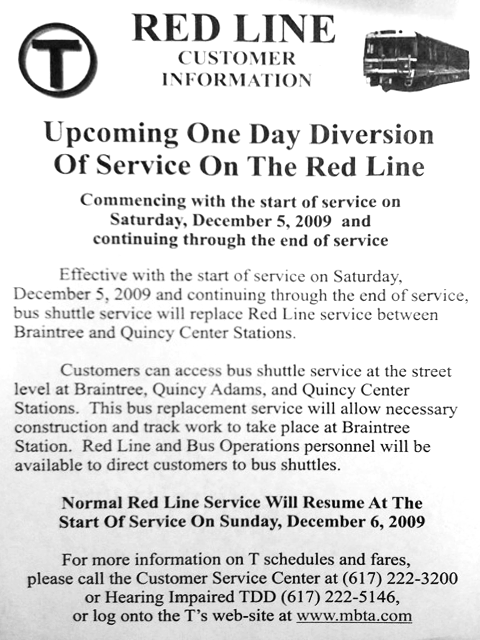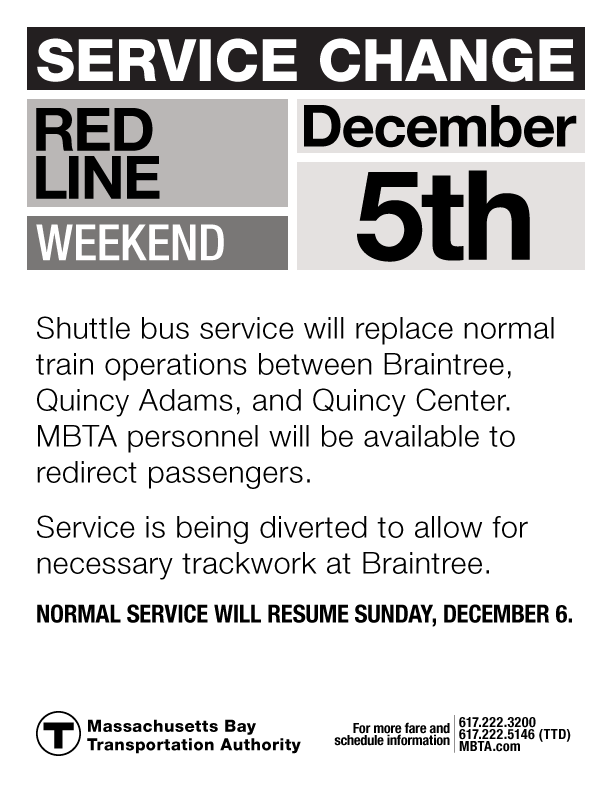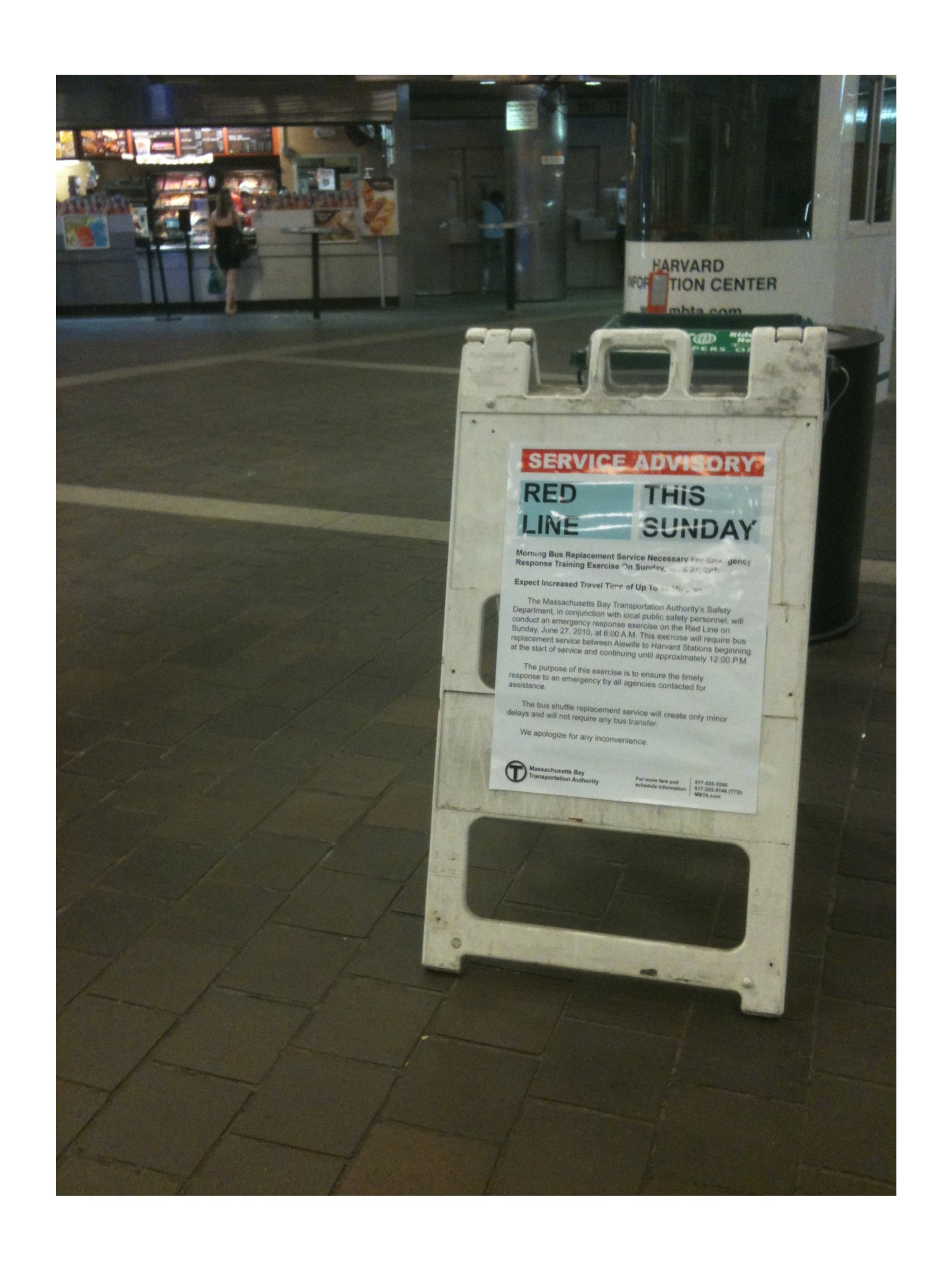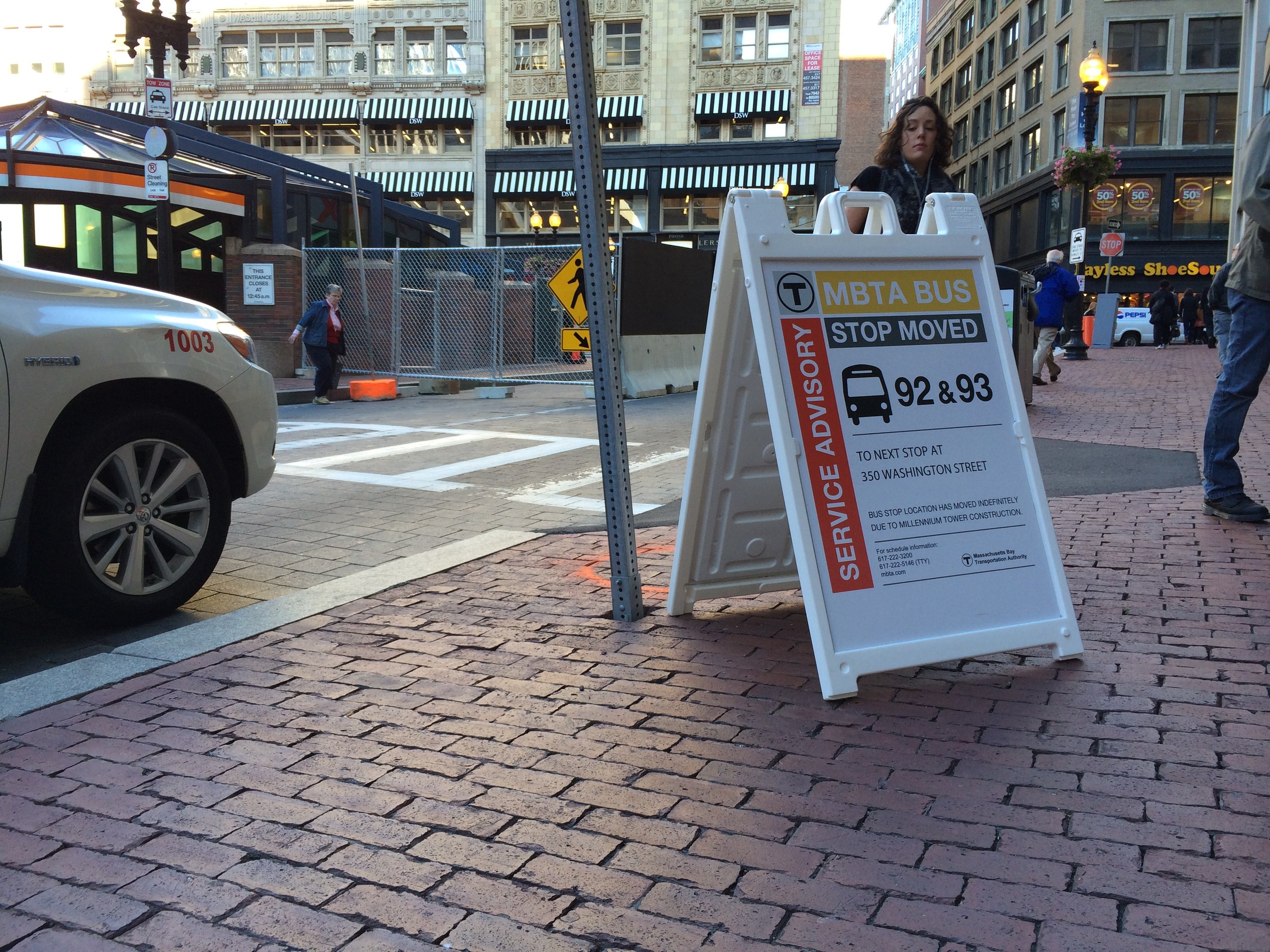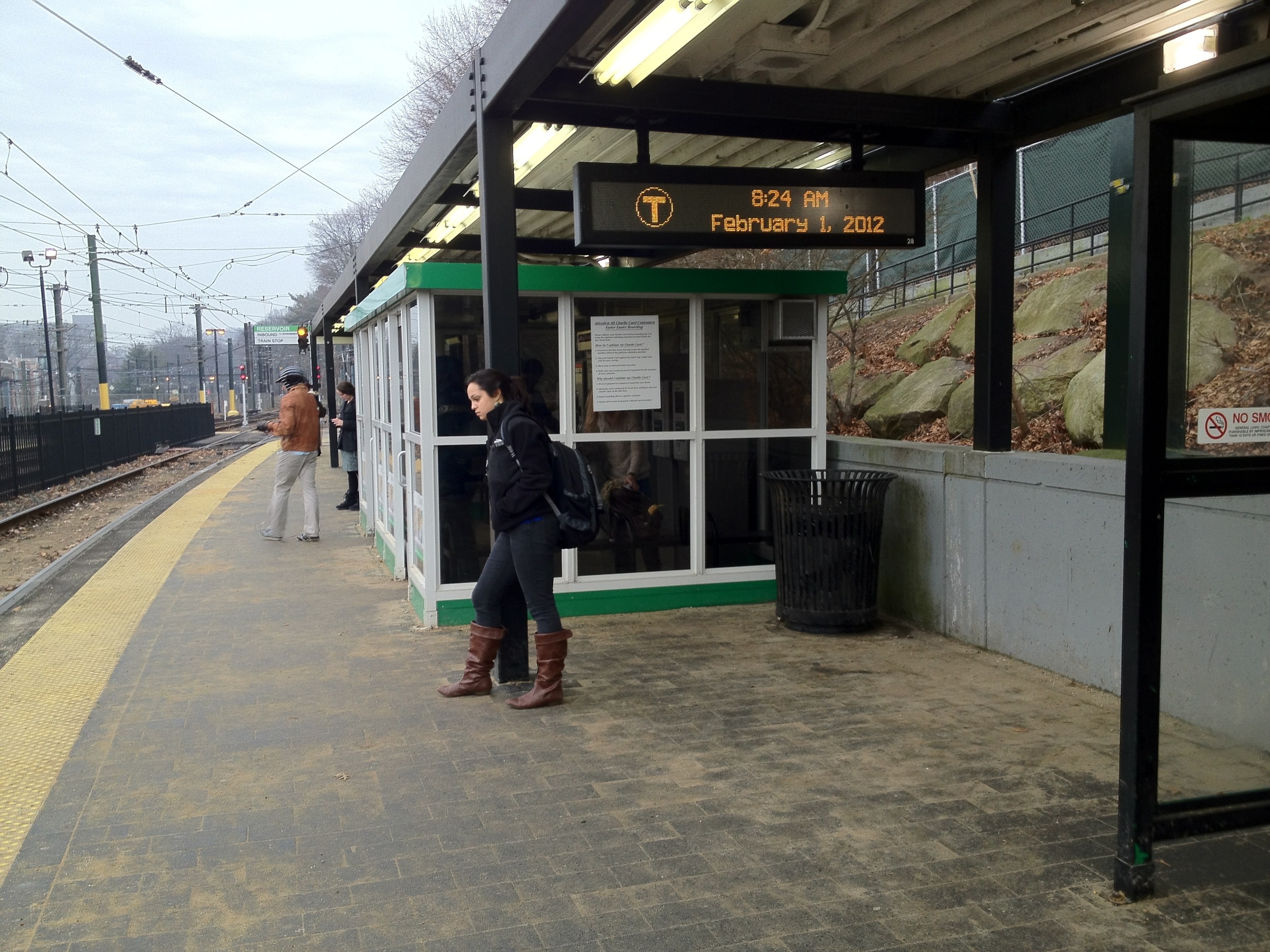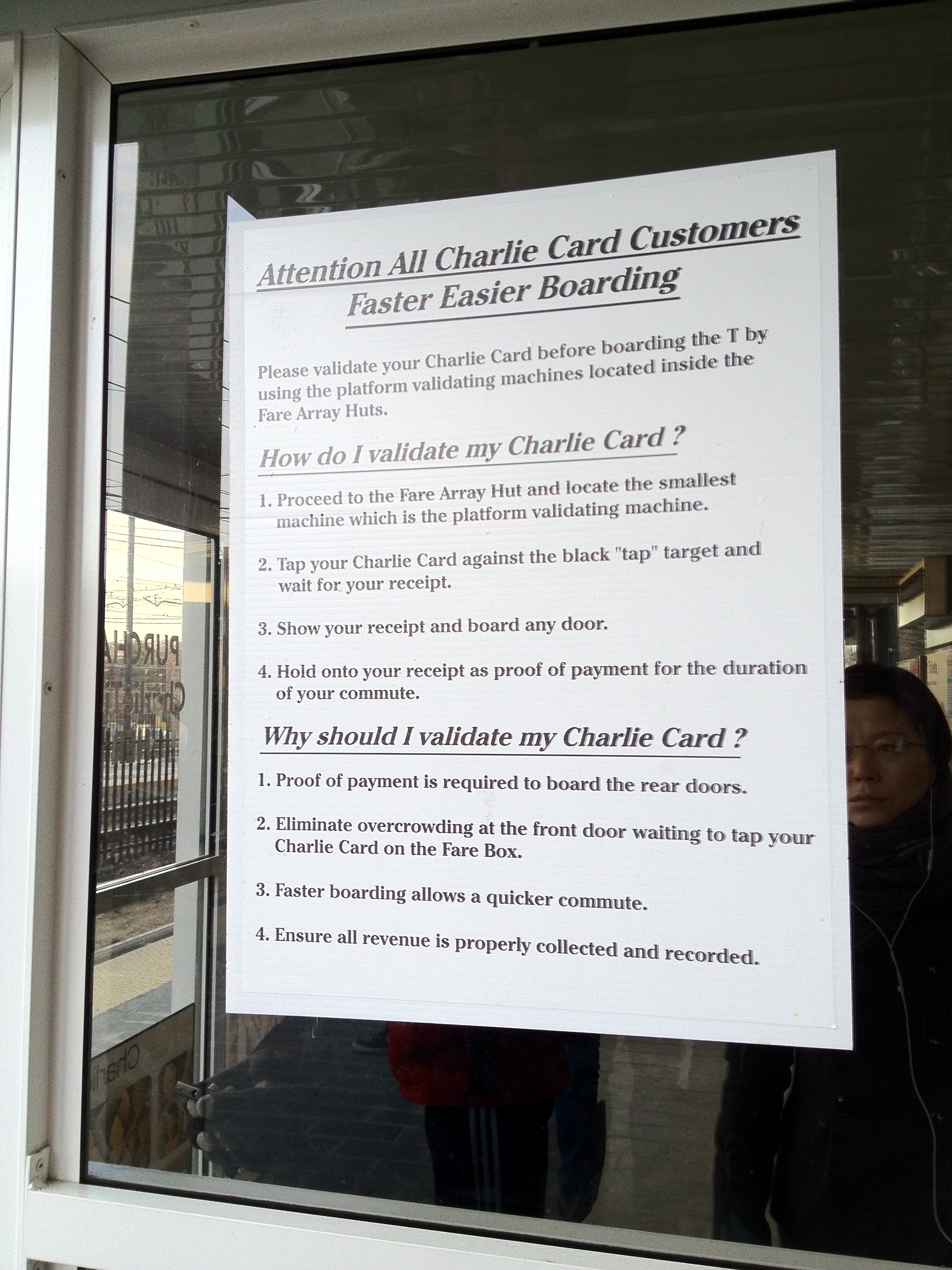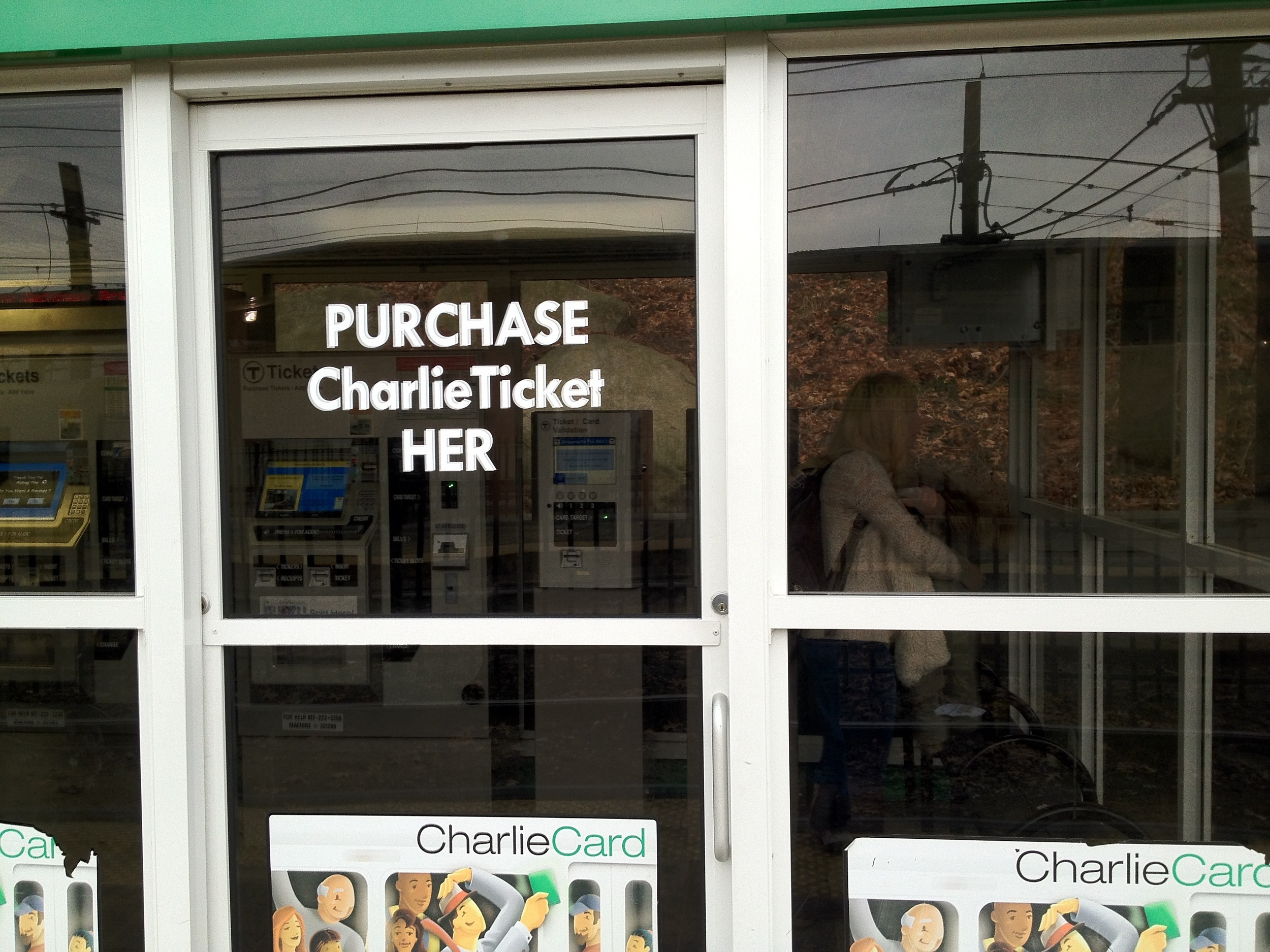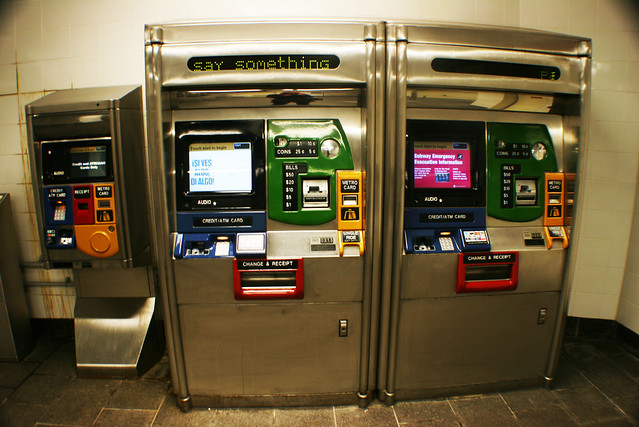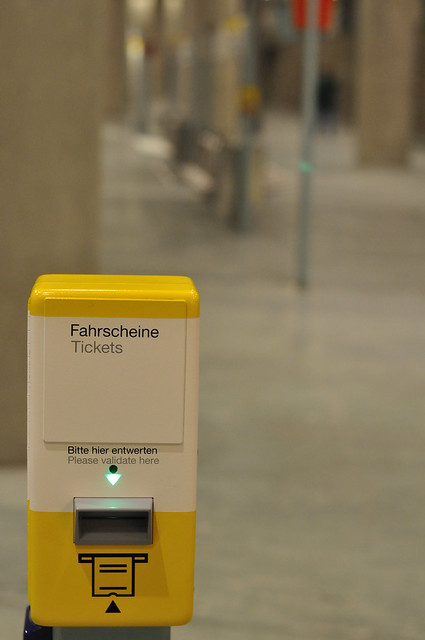
Celebrating 10 Years Of Advocacy: TransitMatters' Guerrilla Poster Campaign
For the next 6 weeks, we will be highlighting landmark moments in our organization’s history so far. First up: Our guerrilla diversion poster campaign, which inspired the T’s current diversion signage.
In December 2009, our founder, Marc Ebuña, came across a Red Line service advisory lying face-down on the floor. This advisory was from a "seat drop," which was one of the ways the T used to communicate with riders about service advisories. Seat drops were not effective. They often ended up on the floor, content side down. Seat drops could not communicate a message to an entire train car, let alone every rider.
The Red Line service advisory Marc found was poorly designed and written more like a press release than an alert. It had too much text, few visual cues highlighting the most important information, and poor branding, making it look unofficial.
We redesigned it, taking a page from the New York City Subway’s advisories at the time. We pulled key information into a high-contrast header, edited down the text significantly, and added the T’s official branding with contact information.
Our redesign posted above a service advisory from the T.
We offered the redesign to the MBTA and received a prompt response from the Deputy Director of Subway Operations. He referred us to the Red Line Chief of Operations, to follow up on design issues. We never got that follow-up.
In March of 2010, the Director of Innovation and Special Projects at MassDOT reached out via the MassDOT Developers Twitter account to invite us to a stakeholder roundtable with the incoming MBTA General Manager, Rich Davey. Here, we mentioned to the incoming General Manager our previous attempts to improve service advisories with staff. He encouraged us to post our designs the next time we saw diversion posters.
Early May 2010, we posted the redesigns. This seemed to push through the internal inertia required to get this prioritized. By mid-June 2010, the T was officially starting to pilot the new signs! Designs continued to evolve internally after then.
Fare Collection and Validation a Branding Problem for the MBTA
Every day on the Green Line, hundreds of light rail trains open their doors to let passengers board and many folks board through the back. In many other countries, this isn't so much a problem since fare collection usually happens on the platform. Here in Boston, fare evasion is a way of life because not all platforms have fare validation machines and the ones that do barely make clear what they're for.
Gator board signage has shown up at many stations with instructions on how to validate and why. They are very text-heavy and in the same style as the press release-style, copy-pasta signage that I first sought to correct and eliminate three years ago when I first started this blog.
Taking Resevoir as an example of this failure to bring attention to instructional signage and design that signage well, we see that the sign doesn't stand out at all as you come down the stairs onto the platform. If you're coming from the other side of the booths, you won't even notice a sign because there isn't one.
As riders come closer to the sign, it becomes apparent that the sign is a wall of text. If you actually read it, you learn the MBTA calls these booths 'Fare Array Huts'. Otherwise, there is no clear warning about the penalty for fare evasion, which may as well be a good thing since there seems to be hardly a soul who gets ticketed and the so-called 'Inspectors' don't make frequent inspections; it is almost an empty threat to warn of a fare inspection and penalty with no proper process to enforce it.
Once you get to the doors of the booth, there is even less of an indication of what these machines do.
When you actually get into the booth and get in front of the machines, it's not very clear what 'Ticket/Card Validation' is and beyond the fact that it will 'deduct fare' there is not clear indication of what this machine will do. Why would anyone with a CharlieCard smart card, loaded with monthly pass and/or cash fare, tap in order to receive a paper CharlieTicket? This is especially confounding for or unclear to people unfamiliar with the proof-of-payment method of fare collection, which is a massive swath of Americans who either don't have access to transit or are used to metro (fare gates), bus (on-board payment at farebox), or commuter rail style (ticket and conductor) fare collection. Only after you tap do you get instructions on-screen to hold onto the ticket in the (unlikely) event of a fare inspection and that the ticket is your proof of payment.
Standing next to the larger machines, the similar physical vocabulary and shape of the devices is plain and homogenous. Compare and contrast this with New York City MTA's full-size cash-accepting ticket vending machine (TVM) and the card-only TVM (below). To people from other systems with two different types of fare vending machines, or even people for whom the T is their home system, the smaller ticket validator machines look outwardly like mini-TVMs. I know when I first visited Boston, I myself was confused about the devices and actually tried to add fare on my CharlieCard with one.
As high a literacy rate as we may have in this country, we are all still bound by the very basic principle that we are humans who live in a complex world and are bound by the process by which our brains filter and perceive the most pertinent information; in short, we will see the physical shape and design language of the machines before we ever stop to read about them.
In many other systems across the world, ticket validation and strict policing of fare collection with fines and even criminal charges is a way of life. These machines require little to no branding, but are clear in their purpose in the context of a society where proof-of-payment transport systems are a way of life and in the simplicity of their design.
With all of this said, is it worth it for the MBTA to take a more proactive and less reactive approach to all-doors-boarding, fare collection, ticket validation, and fare evasion? Absolutely. Is it a priority? Definitely not. Remember in my previous post that the cost of fare evasion to an agency is not only nearly negligible compared to total revenue collected, it is next to impossible to estimate and is a loss that, if recovered, would not be nearly enough to begin closing the growing operating budget gap caused by much more serious funding issues above the MBTA and outside of its control.
Legislation will soon be introduced by Secretary of Transportation Davey that will hopefully address the real need for more strict penalties for fare evaders and give Inspectors and plainclothes transit PD the real power to hold accountable those who are effectively stealing a public service by evading fare collection.
Of course, there are many other times people get on without paying, including those times that drivers wave people on, whether because they need to keep to schedule or a rider has large bills and cannot reload fare at the fare box. There is also an alarming regularity with which doors are simply left open for riders to get on at terminals before the train and fare box are programmed for fare collection. These are policy issues that need to come down from the top with better management of lower-level employees.
That said, let's not lose focus of the fact that these are trivial pursuits with respect to the larger funding issues that threaten to cut bus, train, and ferry service across the region. As The Walking Bostonian notes, fare evasion quickly becomes an emotional issue that blinds people from considering the return on investment of more strict enforcement (under existing penalties and operations practice). The recovery of under $830,000 (a projection of the original $400k estimate in 1984 assessed by the MBTA as the annual loss in revenue from fare evasion, not factoring in recent record ridership) is barely enough to run most routes by themselves for a whole two months. (Other estimates place annual losses in the millions.)
The real problem is at the State House, where legislators hold the power to properly budget for necessary transport services and infrastructure, which they have not done for many, many years, despite earnest attempts to do so.
Consumer Advocacy Group Decries MBTA's Sale of Station Naming Rights
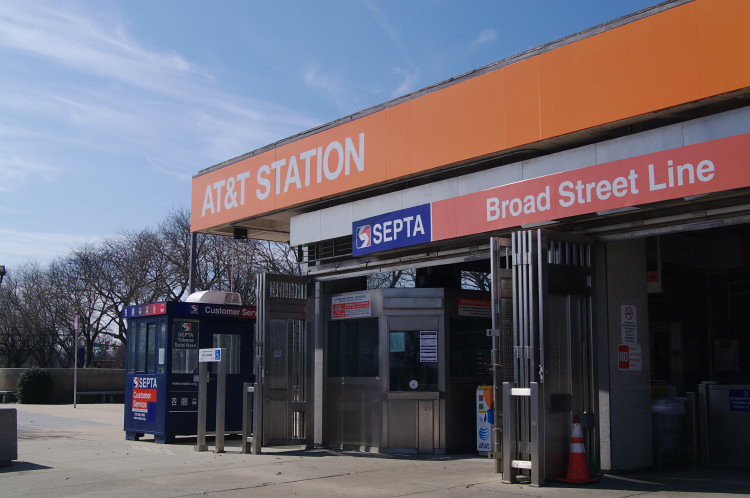 The Public Citizen's Commercial Alert released a public letter yesterday to MassDOT CEO and Secretary of Transport Rich Davey speaking out against the ongoing efforts to sell station names to corporations in an attempt to close the $160 million operating budget gap.
The Public Citizen's Commercial Alert released a public letter yesterday to MassDOT CEO and Secretary of Transport Rich Davey speaking out against the ongoing efforts to sell station names to corporations in an attempt to close the $160 million operating budget gap.
Commercial Alert is a Washington, D.C.-based consumer rights advocacy group under Public Citizen whose agenda is to 'keep commercial culture within its proper sphere, and to prevent it from exploiting children and subverting higher values of family, community, environmental integrity, and democracy.'
This news came in yesterday evening from the Metro and was mentioned in this morning's paper.
If the budget gap isn't closed, the MBTA may have to reduce service or cut certain services entirely, but if the MBTA continues this path, the amount it will gain from the naming rights sale to close the gap is dubious. While Commercial Alert's primary objection to station naming rights is mostly to do with their issue with over-commercialisation and the idea that the city is explicitly endorsing certain products, behaviours, services, and corporations through naming stations after corporations, they also pointed out a fact that we have seen before:
As you know, attempts to sell naming-rights to T stations have not been successful in the past. Taken together, the lack of interest from corporations and the vehement opposition of citizens to these past plans should be enough to suggest that selling naming rights is still not the right direction for the MBTA. Not only does this plan compromise the public nature of transit services in the Boston area, it is also unlikely to alleviate the financial strain the MBTA is currently facing. In other cities, transit naming rights schemes have not yielded significant revenues. In Philadelphia, the recent deal between Southeastern Pennsylvania Transportation Authority and AT&T will yield $3 million over five years. In New York, a twenty year deal to rename a Metro Transit Authority station after Barclay’s will yield only $200,000 per year. Were the MBTA able to raise similar revenues from its planned naming rights sales, they would amount to a drop in the bucket when compared to the reported $150 million deficit the MBTA faces for fiscal year 2013. Moreover, private corporations stand to benefit from any revenues the Transit Authority is able raise; consulting firms in the aforementioned examples have taken significant cuts of sales revenues, as they will in Boston.
While we may need to pinch pennies and make every dollar count (which the old MTA CEO set out to do earlier this year), we need to decide if selling the names of our stations is worth the effort. Before we can make that assessment, we need to wait for IMG Worldwide to finish their assessment of the market; no doubt they will find tepid interest from corporations as has been the case in the past and for other systems.
Categories
- Children (1)
- Diversions (1)
- Olympics (1)
- MAPC (2)
- Red–Blue Connector (2)
- Urban Design (3)
- Bus (4)
- Fares (4)
- Late Night Service (4)
- MBTA ROC (4)
- Silver Line (4)
- Snow (5)
- Blue Line (8)
- Emergency (8)
- Orange Line (8)
- Public Comment (8)
- Maintenance (9)
- Operations (9)
- Signage (9)
- Fare Collection (10)
- Labs (11)
- Safety (11)
- Planning (12)
- Communication (14)
- MBCR (14)
- MassDOT (14)
- Green Line (16)
- History & Culture (16)
- Red Line (18)
- MBTA Bus (21)
- Commuter Rail (24)
- Advocacy (26)
- Capital Construction (28)
- Politics (30)
- Podcast (35)
- News (38)
- Media (40)
- Funding (42)
- Statements (50)
- MBTA (57)


